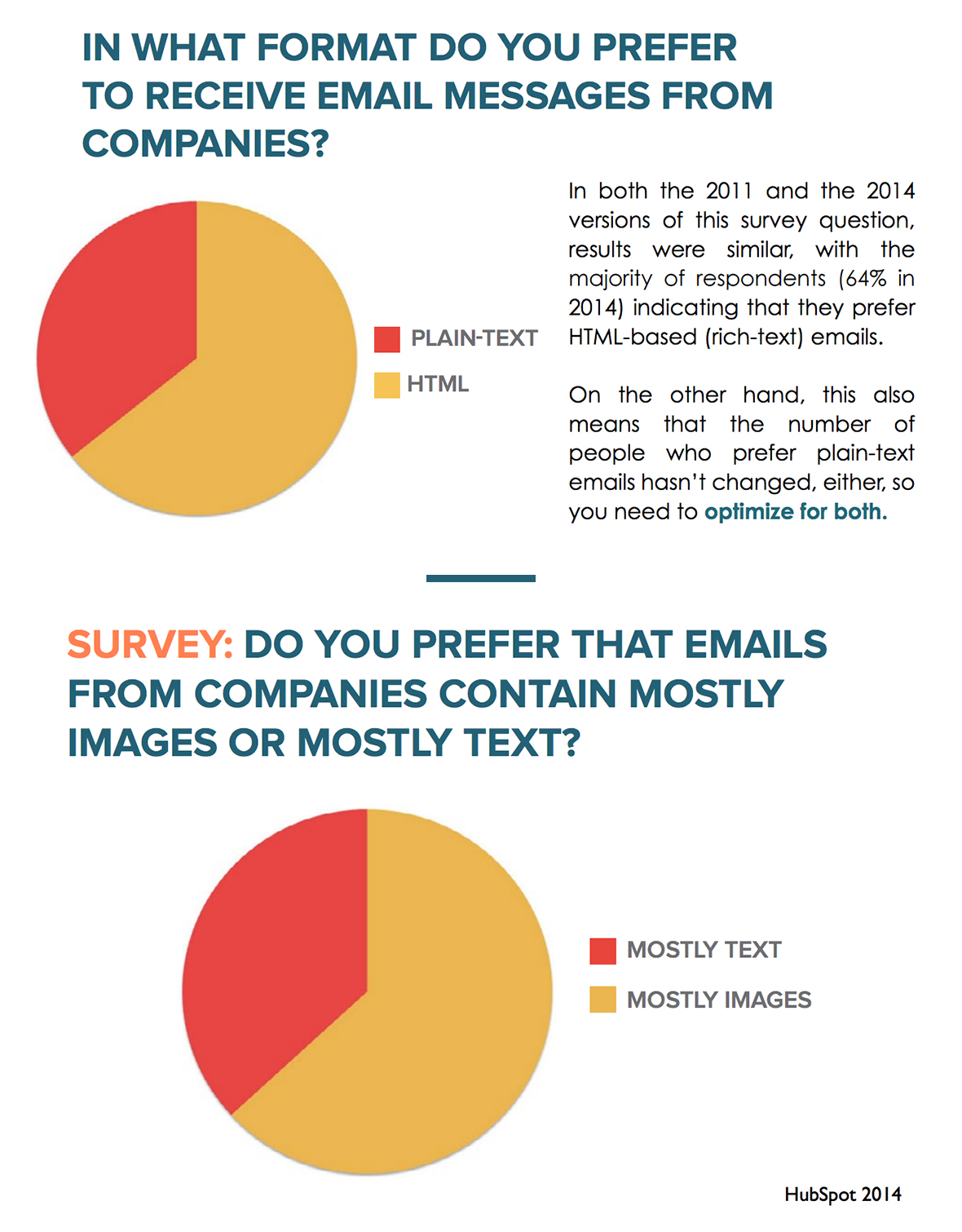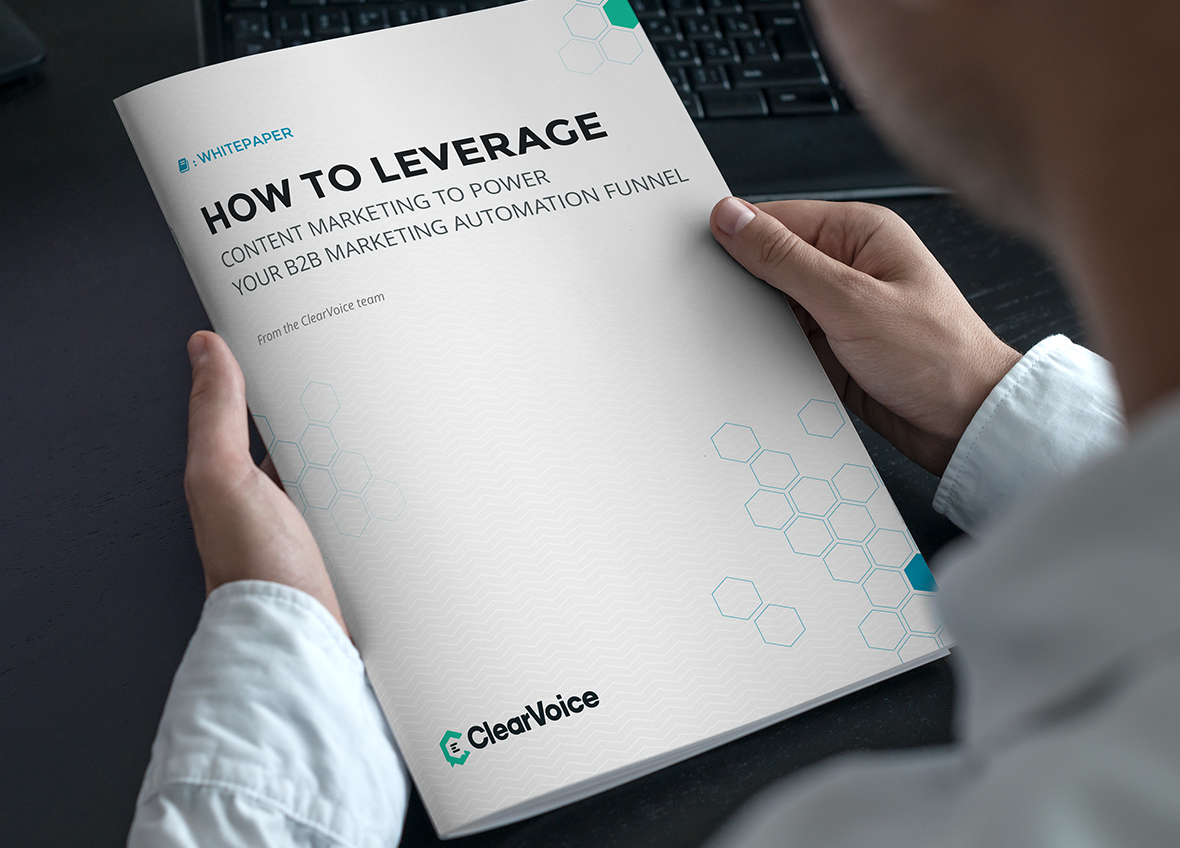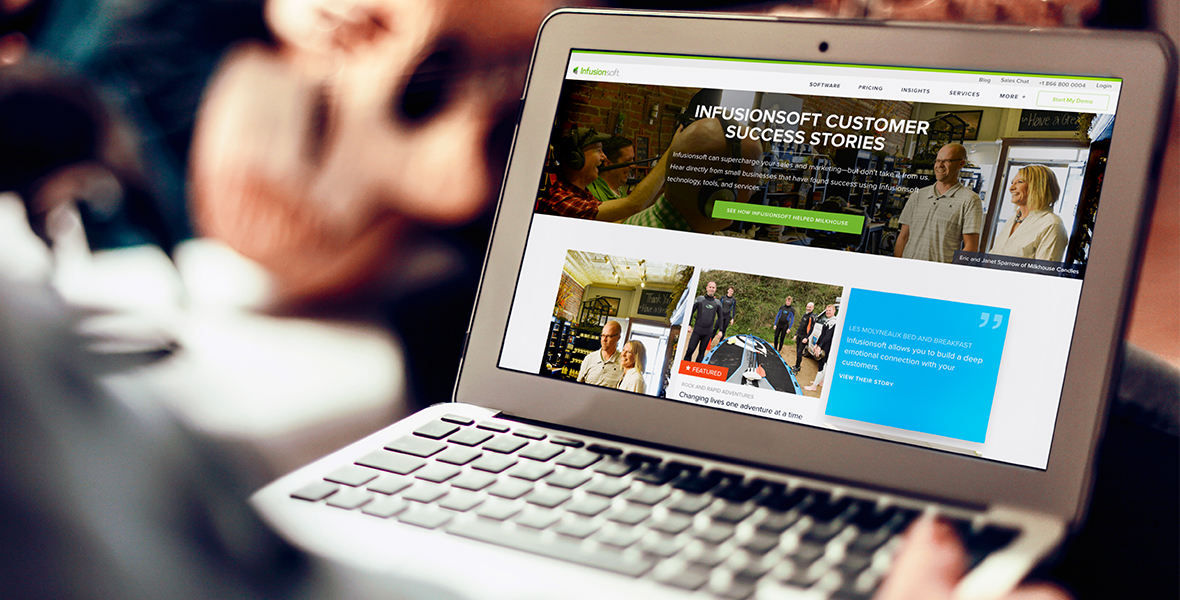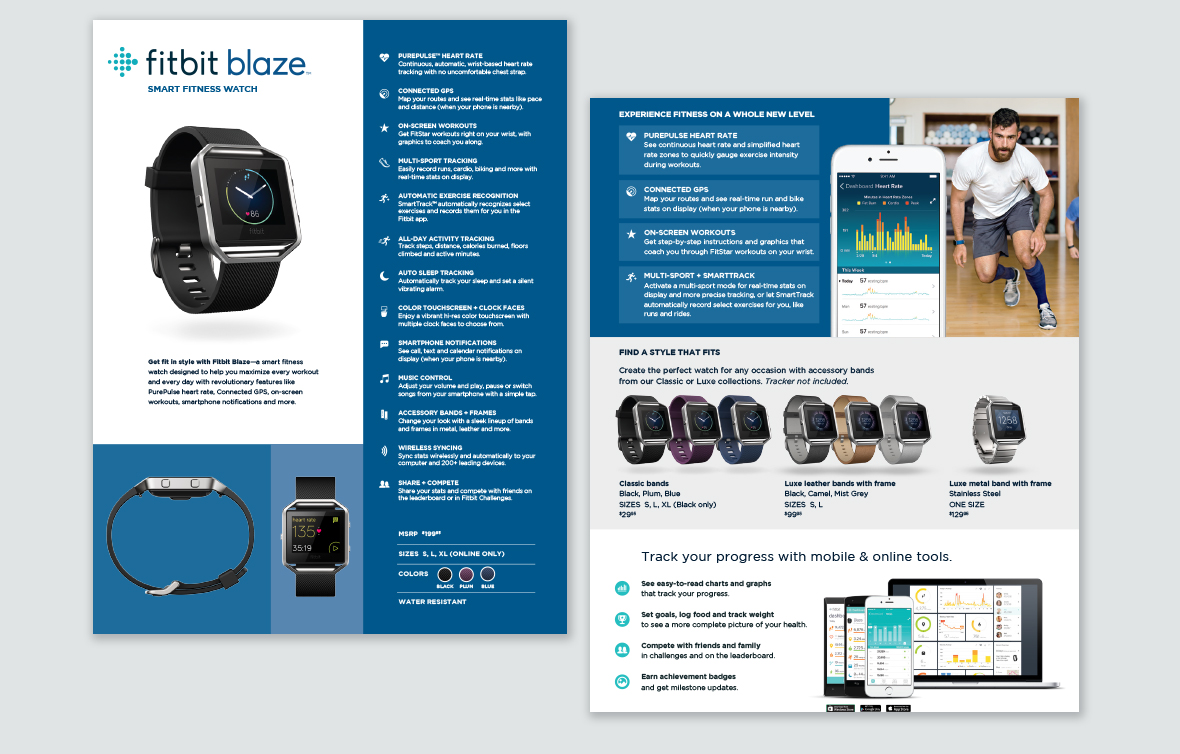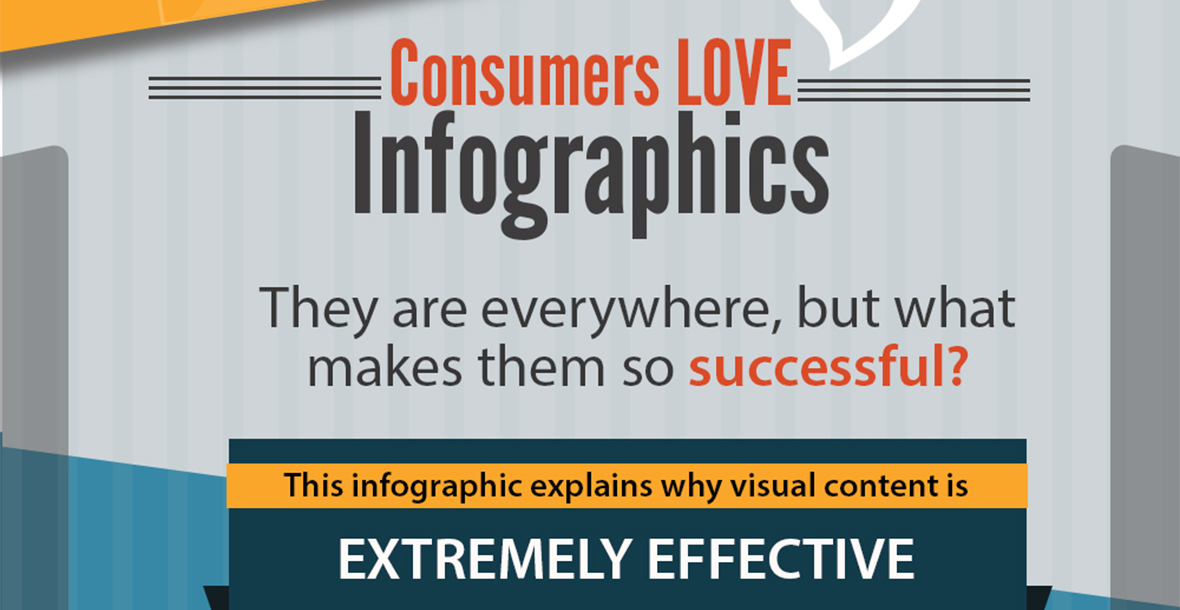High-quality content is at the center of marketing automation. With it, you can generate more leads, boost conversion rates, create repeat customers and enhance the purchasing experience. Without it, well, you won’t do any of that — today’s consumers are too savvy to waste their time on so-so content, not when so much excellent information is just a click or a tap away.
When it comes to the types of content you can create to power your marketing automation, you have a lot of great options to choose from. Let’s take a look at what’s out there.
>> Download the Whitepaper: How to Leverage Content Marketing to Power Your B2B Marketing Automation Funnel
Email is king. According to a Forrester report, email was reported as the single most-effective lead-nurturing tactic employed by top-performing B2B marketers (Forrester defines top performers as those whose annual revenue exceeded their goals).
But the proof of email’s dominance of the content landscape doesn’t end there. Consider the following:
- According to the Direct Marketing Association, 66 percent of people have made an online purchase as the result of an email marketing message
- Consumers ranked email the top communication channel for initial introduction to a product or service, for learning about a product or service, and for post-purchase follow-up about a product or service, the Economist Intelligence Unit found
- Epsilon Email Institute report that triggered email messages, emails deployed as a direct result of the consumer’s actions (welcome, thank you, abandoned shopping cart, etc.) have open rates 76.7 percent higher than business-as-usual messages, and click-thru rates 151.9 percent higher than business-as-usual emails
And the numbers are just as impressive when it comes to sharing and social media:
- McKinsey & Company reports that email is 40 times more effective at acquiring customers than Facebook and Twitter combined
- Add that to the findings of this DemandGen survey, which found 88 percent of B2B buyers use email to share content, while 43 percent use LinkedIn and 35 percent use Twitter
The most important thing to remember with top-of-the-funnel emails is that they’re for educating the consumer, not selling. People at the top of the funnel are generally not ready to buy; they’re looking for information to a specific question or problem. In fact, any perceived attempt at selling will likely make your content suspect and drive the buyer away.
The next question is whether your email should be plain text or HTML. This debate has raged for years, with passionate arguments to be made on both sides, but consider the findings in “Plain Text vs. HTML Emails: Which Is Better? [New Data].” In a 2014 survey, almost two-thirds of respondents said they preferred HTML and image-based emails, but when HubSpot put the results to the test, the opposite proved true.
Not only did the HTML emails have lower open rates than their plain-text counterparts, but:
- The A/B testing also showed that the more HTML-rich an email was, the lower its open rate
- Adding GIFs decreased open rates by 37 percent
- HTML emails had 25 percent lower opens than plain text emails
- HTML emails with increasing amounts of HTML had 23 percent lower opens than HTML emails with less
Brevity is best in emails, as are minimal links. Bullet point information you want to emphasize or create a sidebar to highlight the desired action.
Most importantly, have a clear call to action that offers useful information to the consumer, regardless of whether or not they ever become a customer. How-to lists and free ebooks, whitepapers and webinars are great for driving them into the middle of the funnel.
Though you shouldn’t sell, it is OK to include a phone number in case the reader has questions or wants specific information from you or about your product or service.
Blog Posts
Blogging is critical — mandatory, even. Blog posts fuel both your email and social media marketing, and it’s a powerful tool for building brand presence, establishing yourself as a thought leader, generating leads and increasing SEO.
All great content marketing strategies begin with specific goals of what they want to accomplish and a solid understanding of the target they want to reach. Developing strong content (and a lot of it) is only going to be successful if you know your audience, know yourself, and have a clear picture of what you are both trying to achieve.
Once you are aligned with your target, it’s time to create content. Luckily, you already have great resources at your command. If you don’t know where to start, begin by repurposing content you already have.
- Ebooks and previously published articles can be broken down to create multiple blog posts — in fact, an ebook can provide weeks or months of great content
- Case studies can also be turned into blog content; use their stories to present consumer problems your product or service offers a solution to
- Employees are a great way to build your content library fast — ask them to offer their unique perspective on what it is your company brings to the market
- Listicles and how-to’s are still popular blog content — “5 Things You Should Know About X” and “3 Mistakes You’re Probably Making With Y”-style headlines cast a wide net that can grow your audience and strengthen your SEO
- Guest bloggers not only help fill out your content calendar, they’re also a great way to expand your network and area of influence
- Presentations are also easily convertible into great blog content; look through your SlideShares and PowerPoints with an eye toward blogging, and you’ll be surprised at how much good content bubbles to the surface
When you understand your goals, your target and their needs, strong content will present itself. Here are some additional ways to find ideas for blog content.
Above all else, be bold. Don’t be afraid to take a stand. Don’t be afraid to be provocative or controversial. Don’t offend, but presenting new ideas and approaches is an effective way to stand out in the overpopulated blogging crowd.
Social Media
Social media posts are another critical type of content. As the number of global social media users grows — that number is projected to reach 2.5 billion users by 2018 — the importance of a robust social media presence grows right along with it.
Content types that work well for social media include:
- Blog posts (especially listicles)
- Infographics, images and other strong visual content
- Quizzes and other interactive content
- Contests
When the digital marketing company Regalix asked B2B tech marketers to identify their top social media platforms for product launch:
- 81 percent said LinkedIn
- 71 percent said Twitter
- 54 percent each mentioned Facebook
LinkedIn was also cited as the most popular social channel for B2B marketers to distribute content on in a Direct Marketing Association survey. LinkedIn Pulse is the network’s publishing platform, and it has its own nuances, audience and tone. Long-form content does well here.
With Twitter, of course, you only have 140 characters to state your piece. Use them to link to original blog content — in fact, 16 percent of referrals to longer articles from social sites come from Twitter, according to Pew Research Center. Marketers also create and post Twitter cards to link to their original content.
Seventy-six percent of B2B marketers distribute content via Facebook, according to the 2017 B2B Content Marketing Trends report from Content Marketing Institute and MarketingProfs. Facebook Instant Articles is a product that enables publishers to quickly create interactive articles on Facebook, similar to LinkedIn’s Pulse. It’s now open to all publishers.
Shoutout to Medium for rising through the ranks in the past year. Eight percent of marketers plan on adding Medium to their marketing efforts, according to HubSpot. The platform has earned a reputation as a place where thoughtful, intelligent people gather to read long-form content, and it even boasts its own space for B2B marketers to publish content.
Whitepapers
According to a 2016 DemandGen survey, 82 percent of buyers relied heavily on whitepapers when making B2B purchasing decisions. Additionally, 79 percent of the same respondents said whitepapers where the content they were most likely to share.
The brainy big brother of ebooks, whitepapers are the perfect vehicle for demonstrating your expertise and setting you apart as a true industry thought leader. Whitepapers tend to be longer, more formal and more data-driven than ebooks. They usually require a longer time to produce, but that doesn’t mean they should look or be boring.
Maybe the single most valuable aspect of the whitepaper is that, and in large part because of their reputation for being text-heavy, data-driven and more in-depth, they are consumed largely by decision-makers with high BS meters. That’s one of the most import reasons you can’t give whitepapers the short shrift. Whitepapers by nature must display a credible level of gravitas. Nothing else you produce will carry as much weight at establishing you as real thought leader than a detailed, well-written and coherent whitepaper.
A great whitepaper begins with a relevant topic targeted at a specific audience. This is not the time to fake it ’til you make it. Know your subject matter backward and forward. And be sure and back it up with data, graphs and other authoritative sources. Of course, the secret to great whitepapers is found in the ability to distill what can be more complex subject matter into an easily consumed and easy-to-understand final product.
Ebooks
So, what’s the difference between an ebook and a whitepaper?
- Most ebooks tend to be lighter reads covering a more generalized subject matter
- Where whitepapers are data- and content-heavy, ebooks can and should be more easily consumed and skimmable
- Ebooks also tend to be more conversational in tone and much more visual and graphics- filled
Some ebooks are so design-intensive that they begin to take on the look and feel of a PowerPoint presentation or a graphic novel. They are less intimidating and more visually inviting, which is why they are so successful at attracting a broader audience.
Look at these three free marketing ebooks:
- Optimizely’s “The Optimization Survival Guide” is 47 pages, but all of the content is provided through 1-2 paragraph contributions from individual experts on the Optimizely team
- Unbounce’s “Attention-Driven Design” for creating more effective landing pages is over 60 pages but relies heavily on graphics
- Conversely, Marketo’s “Conversations Not Campaigns,” takes a more traditional text-driven approach to its content, but it’s only 13 pages and presents the copy in easy-to-consume bites
All three ebooks are free; all three provide valuable information to marketers; and all do a great job of capturing leads.
Lastly, ebooks are great for repurposing. Chapters can be broken down to become blog posts. Likewise, multiple blog posts can be combined to create ebooks. Or, as in the case of the Optimizely ebook and Seth Godins’s “What Matters Now,” they can draw their content from the submissions of many contributors. There are many options for producing ebook content without you or someone else having to spend days and days in front of your keyboard.
Case Studies
Nothing adds credibility and proof of the effectiveness of your product or service better than someone else telling your story for you, which is why case studies are perfect bottom-of-the-funnel content.
Infusionsoft does a great job of highlighting customer success stories, starting on their homepage. You can reach “Success Stories” from the menu, plus several stories are highlighted at the bottom of the page.
Once you arrive at the case studies page, you immediately see more than a dozen success stories. Each one is clickable, taking you to their individual success story, which is an engaging and easily understood combination of video, graphics and text.
Here are some tips to get you started with case studies:
- Do you have testimonials on your website’s homepage? If not, start there. Then pepper them throughout the rest of your site, emails and landing pages to support specific features, benefits and services.
- What about dedicated landing pages and web pages? Use these pages to tell the customer’s story in greater detail. Regardless of whether you label it “Success Stories,” “Case Studies,” “What Others Are Saying,” etc., this is where you can use real experiences and results to paint a much more complete picture of what their problem was, the goals they hoped to achieve, the solution you offered and the resulting success. This is where prospects can best see themselves in your existing customers — and best see how you can produce similar results and success for them.
- Include case studies in your blogs and articles. First explain the challenges the consumer was facing, and then show how they overcame them with your help.
- Video is one of the most effective ways of sharing a customer success story. Whether it’s a more detailed story lasting several minutes or a series of short testimonials lasting 10 seconds each, few things are more powerful than real people sharing real stories. Plus, you can use them on your homepage, throughout your website, and on dedicated testimonial and landing pages. They’re also great for social media and are easily viewable on all devices.
Create a library of these files, so members of your sales and marketing teams can easily access specific case studies for use in their emails, nurture campaigns, newsletters, presentations, webinars and on social media. Download our printable checklist with step-by-step instructions on how to create a case study.
Product Sheets
Great product sheets have four things in common:
- They know their target
- They know what’s most important
- They know they can’t say everything
- They have a strong understanding of the human eye
Einstein’s advice to “Make everything as simple as possible, but not simpler,” should be the mantra of anyone creating product sheets.
So many product sheets fail due to lack of a hierarchy of messaging, combined with a blinding visual mishmash of too much information. When creating any product sheet, what’s most important is this: Know where you want people to look first, then drive their gaze there.
Look at the Fitbit product sheet below. Odds are:
- Your eyes first go the beauty shot of the watch
- Then bounce momentarily up to the logo and name
- Before dropping back down to read the positioning copy that distinguishes it from the competition
The eye is then naturally drawn down to the additional product shots before moving to the list of features in the right-side column where we finish on the price. It’s the perfect marriage of form and function, art and science.
The back side begins by going into greater detail about the features and benefits extolled in the positioning paragraph on the front side, then down to the upsells and additional features and benefits. Everything is set beautifully in its place. As simple as possible, but not simpler.
Most B2B product sheets won’t have the brand recognition of Fitbit, so you’ll want to add:
- Social proof in the form of a testimonial or some kind of an expert endorsement
- A clear call to action
- Contact info
Infographics
Humans are visual animals; we retain more of what we see. More importantly, we share what we see. Take a look at this infographic from Marketing Domination Media.
Infographics are great for distilling complex thoughts and data into easily consumable content. When done well, few things are more effective. The mistake most infographics make is they are poorly designed and try to do too much. The end result is just visual noise.
When you have clear messaging and a great designer, infographics are a great, highly shareable content vehicle for your top-of-the-funnel messaging.
WebinarsB2B marketers rank webinars just behind product demos as the most effective method for lead-generation marketing, according to BtoB Magazine’s “2013 Lead Generation: Optimum Techniques for Managing Lead-Gen Campaigns” report.
Webinars are to the middle of the funnel what infographics are to the top. That’s because, like infographics, they’re great at visually conveying information and generating qualified leads.
Live webinars also have the added advantage of letting you interact with consumers in a way other types of content don’t. Then there’s the added advantage of being able to be repurpose your webinar as streaming content that can live in your funnel for years. And with today’s technology, they are also affordable.
The key to successful webinars is clear, focused messaging and a strong, compelling call to action.
Video
A marketing strategy that doesn’t include video is severely lacking. Consider these stats:
- Brands that use video increase revenue 49 percent faster than those that don’t (Vidyard)
- Companies using video reported seeing an average cost per marketing-generated lead of $93, as compared to $115 for companies that didn’t use video (Aberdeen)
- Using the word “video” in an email subject line boosts open rates by 19 percent and click-thru rates by 65 percent (Syndacast)
As Mark Zuckerberg told the German newspaper Die Welt am Sonntag in early 2016, “I think video is a mega trend, almost as big as mobile.”
Video is effective and popular content at all stages of the funnel. Create:
- How-to videos, thought leadership video blogs and videos that showcase company culture at the top of the funnel
- Product demos and video case studies in the middle of the funnel
- Post-sale instructional videos, product FAQs and videos tied to drip campaigns at the bottom of the funnel
- Testimonials work at any level of your funnel
The beauty of video is that it has become far more cost-effective. Full-length feature films are now being shot on smartphones. Your laptop has a camera. Your phone has a camera. A good one. With free editing software and a modest investment in a low- or mid-priced camera, and yes, even with the newest model smartphones, everyone can shoot and edit broadcast-quality video. Of course, for many products, it’s worth the investment to hire professionals, but the barrier to entry has been lowered dramatically.
Next time
Now that you’re familiar with the types of content that can power your marketing automation, next week we’ll look at some specific ways they are used.
Our latest whitepaper explains the various types of automated marketing campaigns and how content is used to drive them. For the complete guide, download “How to Leverage Content Marketing to Power Your B2B Marketing Automation Funnel.”

